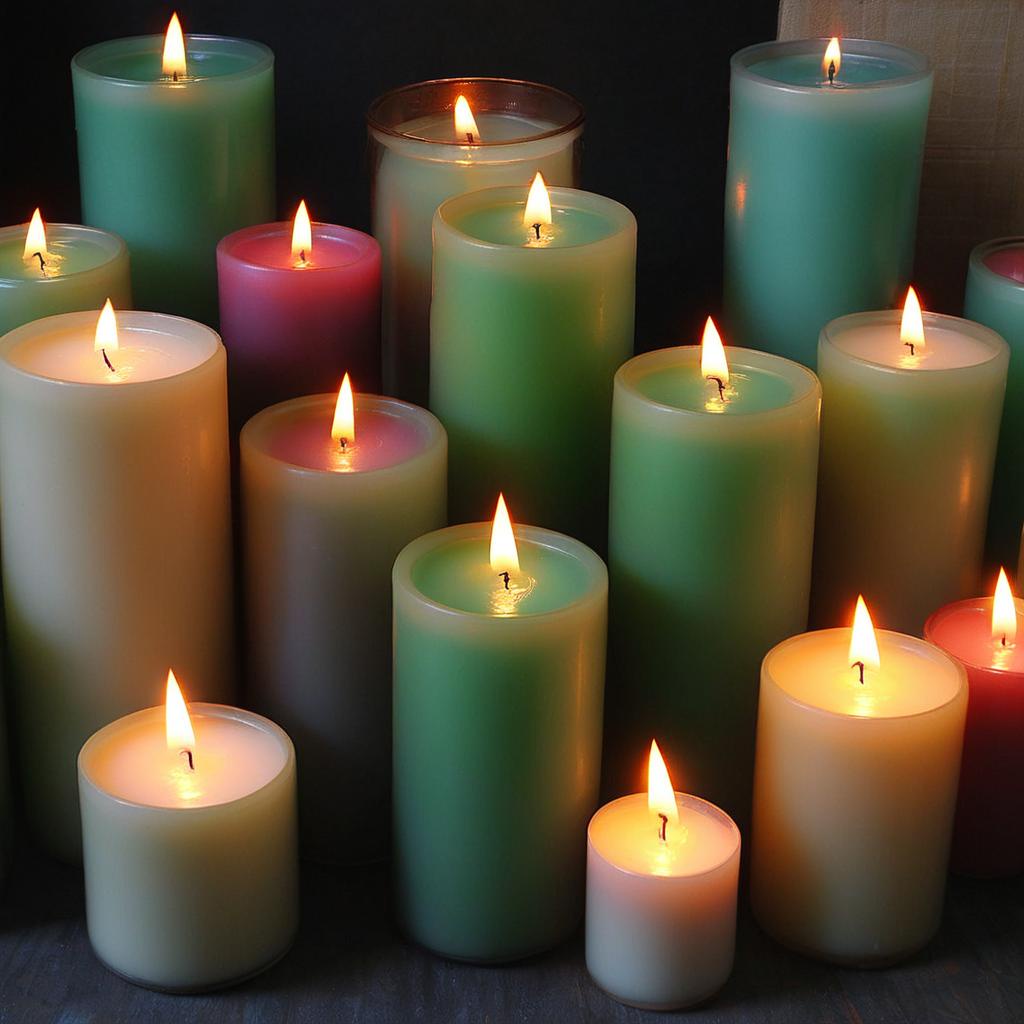Discover the fascinating journey of candle making through the ages and the evolution of molds in this informative blog post.
Early Origins of Candle Making
Candle making is an ancient art that dates back thousands of years. The earliest known candles were made by the ancient Egyptians, who used reeds soaked in animal fat as a wick. The Chinese also developed their own method of making candles using whale fat. In ancient Rome, candles were made from tallow, which is rendered animal fat. These early candles provided a source of light and were often used in religious ceremonies and for practical purposes such as cooking and reading.
As time went on, candle making techniques began to evolve. The Romans introduced the use of beeswax, which produced a cleaner and brighter flame compared to tallow. Beeswax candles became highly valued and were often used in religious ceremonies and by the wealthy. The Middle Ages saw the introduction of the first candle molds, which allowed for the production of uniform candles. These molds were typically made of clay or metal and were handcrafted by skilled artisans.
Innovations in Candle Making Techniques
The Industrial Revolution brought about significant innovations in candle making techniques. With the advent of mechanization, candles could be produced on a much larger scale. The introduction of steam-powered machines allowed for the mass production of candles, making them more affordable and accessible to the general population. During this time, paraffin wax, a byproduct of petroleum refining, was also introduced as a new candle making material. Paraffin candles became popular due to their affordability and ability to burn longer.
In the 19th century, the invention of the braided cotton wick revolutionized candle making. This new wick burned more evenly and reduced smoke and soot. It also allowed for the development of scented candles, as the cotton wick could absorb and release fragrance oils. This innovation opened up a whole new market for candles, as they could now be used not only for lighting but also for creating ambiance and pleasant scents.
Role of Molds in Candle Making
Candle molds played a crucial role in the development of candle making. Before the invention of molds, candles were made by repeatedly dipping a wick in melted wax or pouring wax into molds made of clay or metal. This process was time-consuming and labor-intensive, resulting in candles of varying sizes and shapes. The introduction of candle molds revolutionized the industry by allowing for the production of consistent and uniform candles.
Candle molds are typically made of metal or silicone and come in a variety of shapes and sizes. They are designed to hold the melted wax while it cools and solidifies, resulting in a perfectly shaped candle. The use of molds also allows for the creation of intricate designs and patterns, further enhancing the aesthetic appeal of candles.
Popular Candle Mold Designs
There are countless candle mold designs available today, catering to a wide range of preferences and styles. Some popular candle mold designs include pillar molds, votive molds, taper molds, and container molds.
Pillar molds are used to create cylindrical candles of various heights and diameters. They are often used for decorative purposes and can be customized with different colors and textures. Votive molds are smaller in size and are commonly used for making scented candles. Taper molds, as the name suggests, are used to create taper candles, which are long and slender. Container molds are designed to hold the wax within a container, such as a jar or tin, resulting in a finished candle that can be easily transported and displayed.
In addition to these traditional mold designs, there are also specialized molds available for creating unique and novelty candles. These include molds shaped like animals, flowers, and even food items. The possibilities are endless when it comes to candle mold designs, allowing for creativity and personalization in candle making.
Modern Trends in Candle Making
In recent years, there has been a resurgence of interest in handmade and artisanal products, including candles. This has led to a growing trend of consumers seeking out candles that are made using natural and sustainable materials. Soy wax and beeswax are popular choices for environmentally conscious candle makers, as they are renewable and biodegradable.
Another emerging trend in candle making is the use of essential oils for fragrance instead of synthetic fragrances. Essential oils are derived from plants and offer a more natural and holistic scent experience. They also have the added benefit of potential aromatherapy benefits, depending on the specific oil used.
Additionally, personalized and custom-made candles have become increasingly popular. Many candle makers now offer the option to create custom scents, colors, and designs, allowing customers to have a truly unique candle that suits their preferences and style. This trend reflects the desire for individuality and personalization in consumer products.
Overall, the art of candle making continues to evolve and adapt to changing consumer preferences and trends. Whether it's through the use of innovative materials, unique mold designs, or personalized creations, christmas candles remain a timeless and versatile product that holds a special place in our lives.


No comments yet